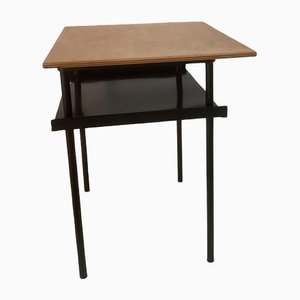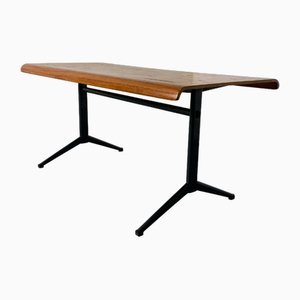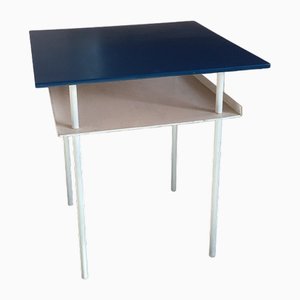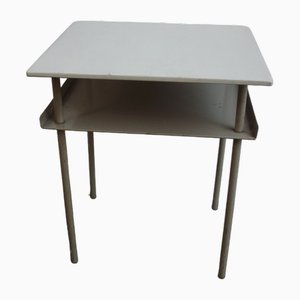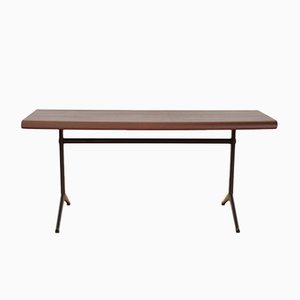
In 1888, blacksmith Johannes Auping of Deventer, the Netherlands, was commissioned by a local hospital to construct a bed that was more hygienic than the straw mattresses in use at the time. Working with steel, he designed a mattress that consisted of braided wires joined to a metal frame. Two years later, the Civil Hospital in Amsterdam commissioned the first major order of forty beds. After some adjustments to the original, Auping marketed the new design as a “healthy steel mattress”—with unprecedented capacity for ventilation due to airflow between the steel wires. The high demand for the newfangled mattress allowed Auping to open his eponymous factory in his hometown in 1912.
In the postwar boom era, the Auping company began to collaborate with renowned Dutch designers on an expanded product line. Highlights from this collectible phase of Auping’s history include Dick Cordemeijer’s Cleopatra Daybed (1953), Wim Rietveld’s Arielle Daybed (1955), Friso Kramer’s Euroika Tables (1963), and Frans de la Haye’s Auronde Bed (1973). The Auronde and Cleopatra remain Auping’s most successful designs to date, each having sold over a million models.
Auping obtained the addition of “Royal” to their name for their 100th anniversary and are now known as Koninklijke Auping BV in Dutch. Today, the company is the largest independent manufacturer of beds in the Netherlands, with a reputation for high quality products, innovative designs, and lasting comfort. Recent designer collaborations include projects with Piet Hein Eek, Thomas Althaus, and Jan des Bouvrie. Auping’s product line—beds, box springs, mattresses, mesh bases, tables, and chairs—are solely manufactured in the Netherlands and have won various awards over the years, such as the Red Dot Award and Cradle to Cradle certification for utilizing of more than 50% recycled materials.

